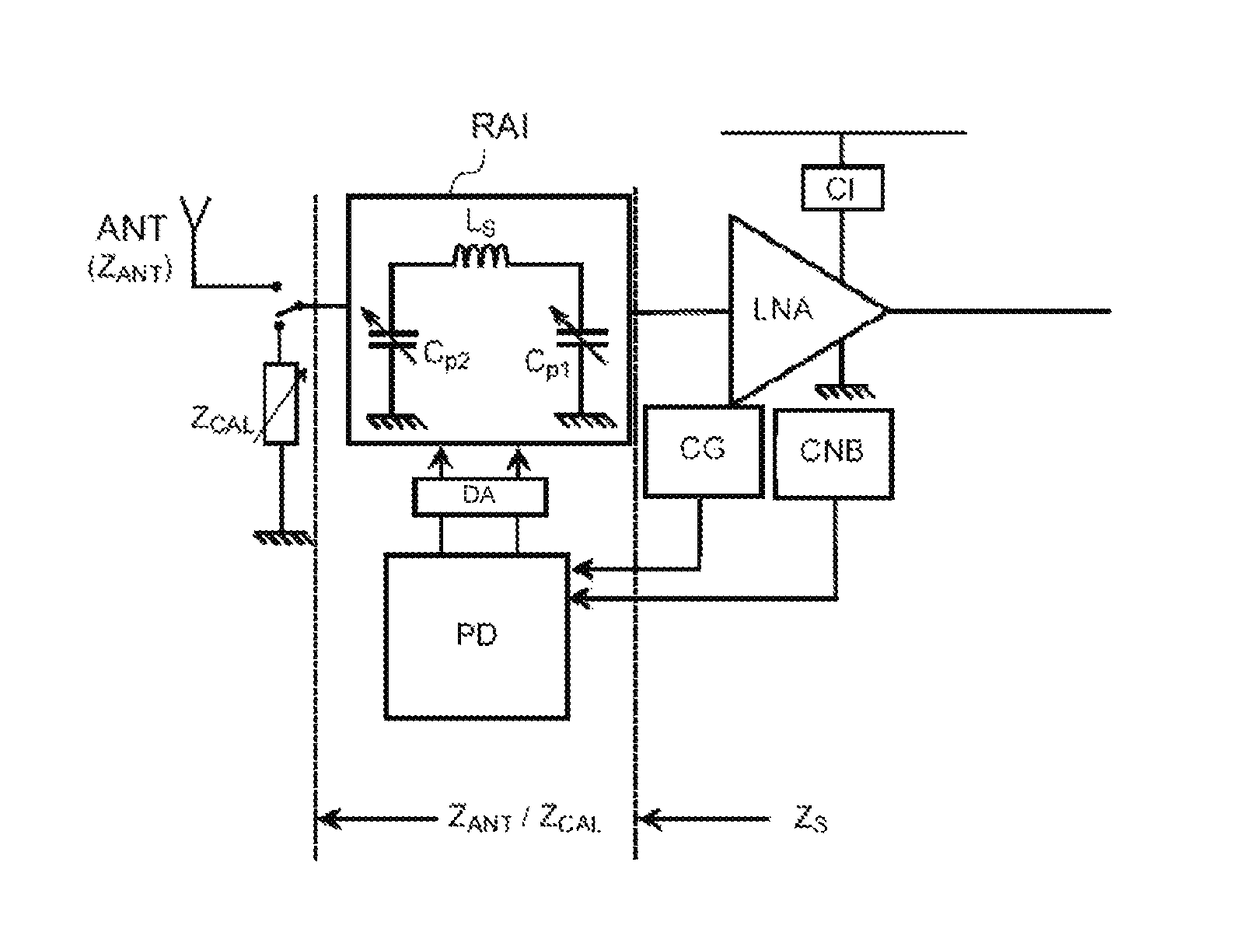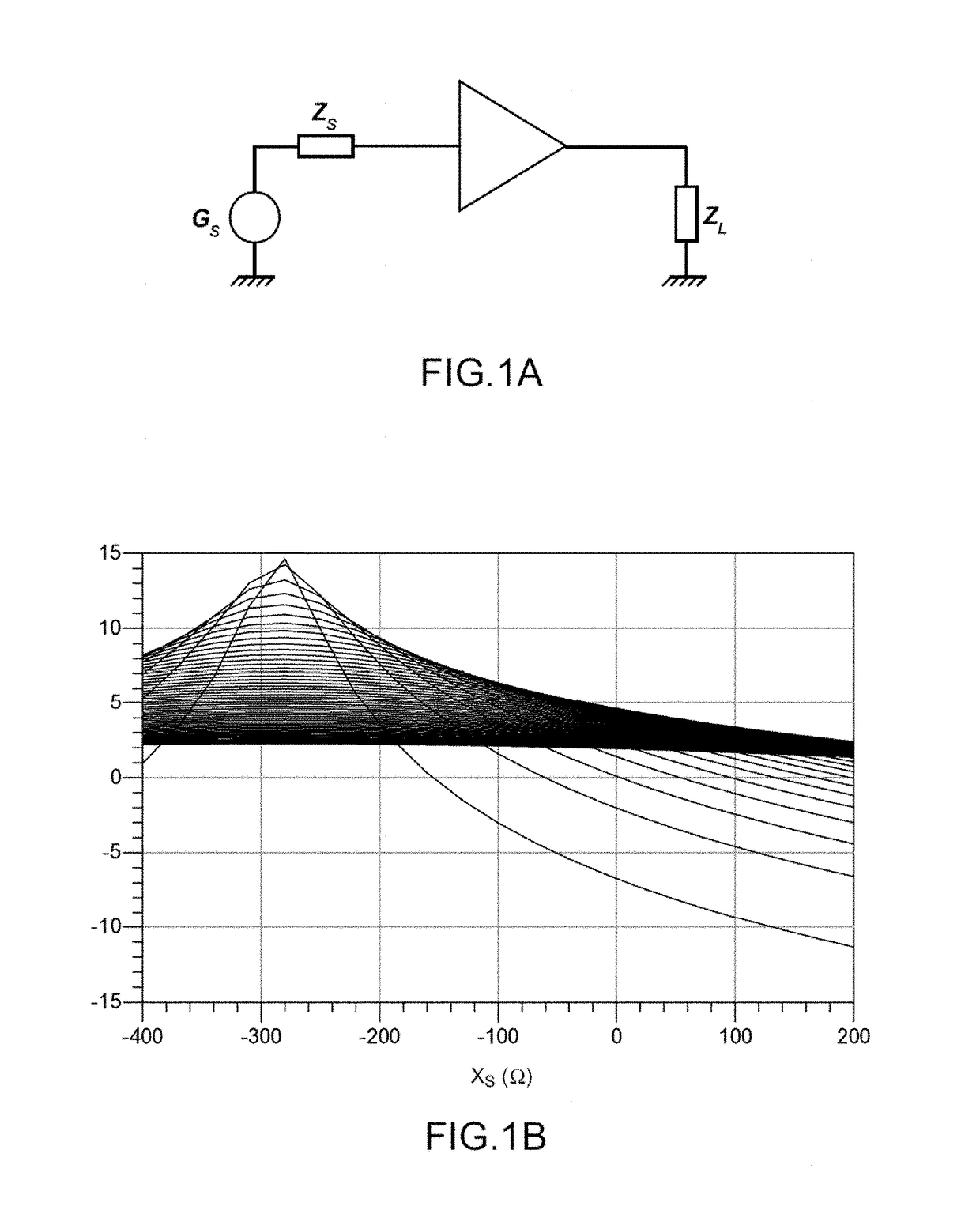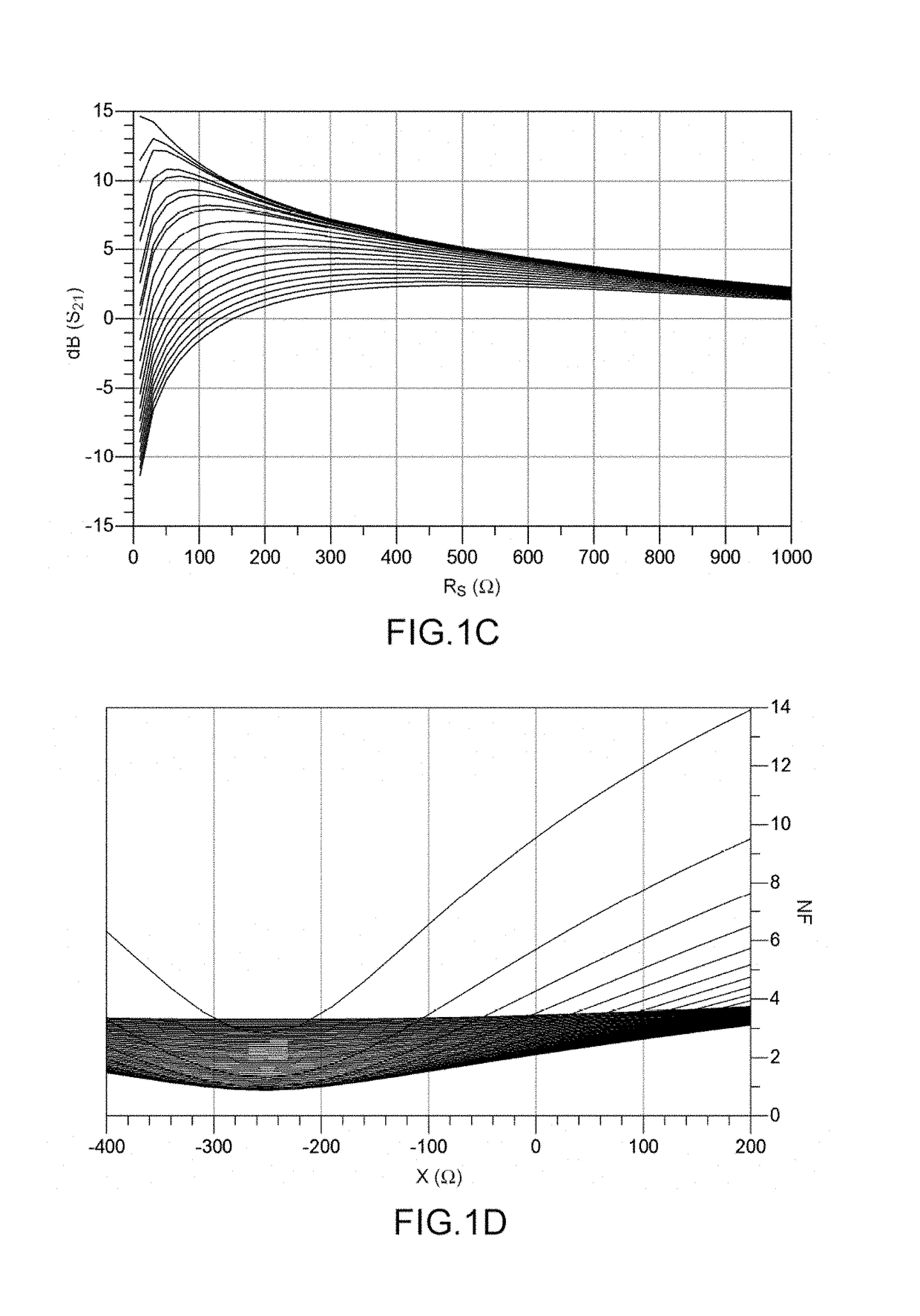Automatic impedance matching for a radiofrequency reception chain
a radiofrequency reception chain and automatic technology, applied in the direction of transmission, line impedence variation compensation, power management, etc., can solve the problems of low reflected power, degraded performance levels, and loss of mismatch losses
- Summary
- Abstract
- Description
- Claims
- Application Information
AI Technical Summary
Benefits of technology
Problems solved by technology
Method used
Image
Examples
Embodiment Construction
[0030]The term “radiofrequency” is understood to mean any frequency between 3 kHz and 300 GHz.
[0031]The term “low-noise amplifier” is understood to mean an amplifier whose input is connected, or intended to be connected, either directly or indirectly, to a receiving antenna.
[0032]The term “reactive element” is understood to mean an electrical component whose impedance has, at at least one frequency in the radiofrequency domain, a reactive (capacitive or inductive) component that is greater than or equal to—and preferably greater, by a factor 10 or more, than—its resistive component.
[0033]Throughout the rest of the text, the signals in the matching network will be considered to have a single frequency f=ω / 2π, thereby allowing a capacitive or inductive element (reactive element) to be characterized by a reactance value. This approximation is generally satisfactory in the radiofrequency domain.
[0034]The term “impedance matching” is understood to mean a condition under which the transfe...
PUM
 Login to View More
Login to View More Abstract
Description
Claims
Application Information
 Login to View More
Login to View More - R&D
- Intellectual Property
- Life Sciences
- Materials
- Tech Scout
- Unparalleled Data Quality
- Higher Quality Content
- 60% Fewer Hallucinations
Browse by: Latest US Patents, China's latest patents, Technical Efficacy Thesaurus, Application Domain, Technology Topic, Popular Technical Reports.
© 2025 PatSnap. All rights reserved.Legal|Privacy policy|Modern Slavery Act Transparency Statement|Sitemap|About US| Contact US: help@patsnap.com



